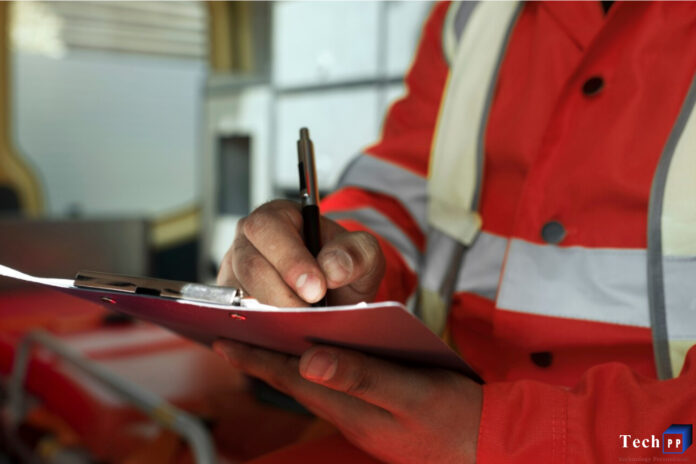Safety standards! Emergency vehicles perform crucial work. Whether racing to medical emergencies, managing highway incidents, or leading critical infrastructure repairs, the right equipment determines both safety and compliance. Yet, upgrading emergency equipment is not as simple as swapping out old gear for new. Each upgrade must meet a rigorous set of safety standards that ensures operational reliability and public safety.
This post breaks down the most important safety standards every fleet manager and equipment buyer should know before their next upgrade.
Why Safety Standards Matter
Before exploring specific standards, it’s worth asking why they exist in the first place. Safety standards ensure that every piece of emergency equipment performs as expected in unpredictable, high-stress environments. These regulations cover everything from lighting and sirens to mounting hardware and reflectivity. Cut corners here, and lives—as well as reputations and budgets—could be at risk. Understanding and applying these standards is not just about legal compliance; it’s about putting safety first.
Know Your Regulatory Bodies
A variety of organizations influence emergency equipment standards, and their recommendations often become legal requirements at the state or federal level.
National Fire Protection Association (NFPA)
The NFPA publishes codes governing fire apparatus, including lighting, sirens, and control systems. Their NFPA 1901 standards set benchmarks for safety-critical features from visibility to electrical systems.
Society of Automotive Engineers (SAE)
SAE sets guidelines for vehicle-mounted equipment, especially lighting. Their standards cover aspects like brightness, color, beam pattern, and mounting angles for emergency vehicle lighting.
Federal Motor Vehicle Safety Standards (FMVSS)
FMVSS regulations ensure all automotive equipment installed in emergency vehicles meets minimum safety levels for on-road use in the United States.
State and Local Regulations
Don’t overlook regional requirements. States and municipalities often have specific mandates for emergency warning systems, placement, and usage.
Key Safety Standards for Equipment Upgrades
When planning an upgrade, pay particular attention to these areas:
1. Lighting Systems
Proper illumination is critical for visibility during both daytime and nighttime operations. LED light bars for trucks, fire engines, and police vehicles must be SAE-certified for their intended application. Requirements may specify color (e.g., red, blue, amber), beam intensity, flash patterns, and lens clarity. Mounting positions are also regulated to avoid obstruction and maximize effectiveness.
Checklist for Lighting Upgrades
- Use only SAE J595 (for warning lights) or J845 (for light bars) compliant products
- Ensure all colors and flash patterns meet local codes
- Verify mounting hardware secures lights in high-vibration environments
- Regularly inspect for lens wear or moisture buildup
2. Audible Warning Devices
Sirens and speakers must cut through ambient noise and be perceivable from a safe distance. NFPA and SAE both issue decibel (dB) output minimums and set standards for sound clarity.
Best Practices
- Select sirens with multiple tones and volume control
- Test systems monthly to ensure output remains within regulated limits
- Document all annual loudness and function checks for inspections
3. Reflective Markings and Signage
Visibility does not stop with lighting. High-intensity reflective tape and clear, well-placed signage reduces accident risks on chaotic scenes.
Essentials for Compliance
- Follow DOT and NFPA guidance for retroreflective placements
- Use contrasting colors for critical wording (e.g., “Keep Back,” “Caution”)
- Replace damaged markings promptly
4. Mounting and Installation
Even the highest-quality equipment will underperform if not correctly installed.
Installation Standards
- Confirm brackets and securing hardware are corrosion-resistant
- Avoid drilled installations on load-bearing vehicle parts
- Route wiring away from heat or moisture sources
- Consult vehicle manufacturer guidelines for new installations
5. Electrical Safety
All upgrades must protect vehicles from shorts, overloads, or system failures that could disable life-saving gear.
Electrical Safety Basics
- Use appropriately rated fuses and breakers
- Choose waterproof connectors and cable routing clips
- Perform a complete electrical load analysis prior to any major upgrade
6. Documentation and Training
Every upgrade must be logged, from purchase receipts to installation photos. Documents should include vendor certifications, compliance statements, and warranties. After modifications, brief your team on any new usage protocols and perform real-world scenario drills.
Pro tip
Maintain a digital logbook and require staff sign-off on all safety briefings.
Practical Examples
- A small fire district upgraded vehicle lighting to new LED light bars. By verifying SAE J595 certification and NFPA color compliance before purchasing, they avoided costly delays during annual inspections.
- A police department added a second siren but found it exceeded local decibel limits. They avoided a ticket penalty by reading the applicable local codes first and selecting an adjustable-output model.
- An EMS fleet started keeping digital records of maintenance and installation, making annual audits much more efficient and passing every safety check with ease.
Raising the Bar with Every Upgrade
Keeping emergency equipment up to standard is a serious responsibility. Upgrading lighting, sirens, or reflective markings isn’t just about improving visibility or aesthetics; it’s a commitment to public and crew safety. Equip your teams with up-to-date, certified gear, adhere to all regulatory requirements, and document every upgrade carefully. These steps not only ensure compliance but foster a culture of reliability and trust both within the emergency services community and with the public they serve.
For more information about staying compliant or for expert suggestions on choosing the right equipment, consult your local regulatory authority or certified emergency vehicle outfitter.


